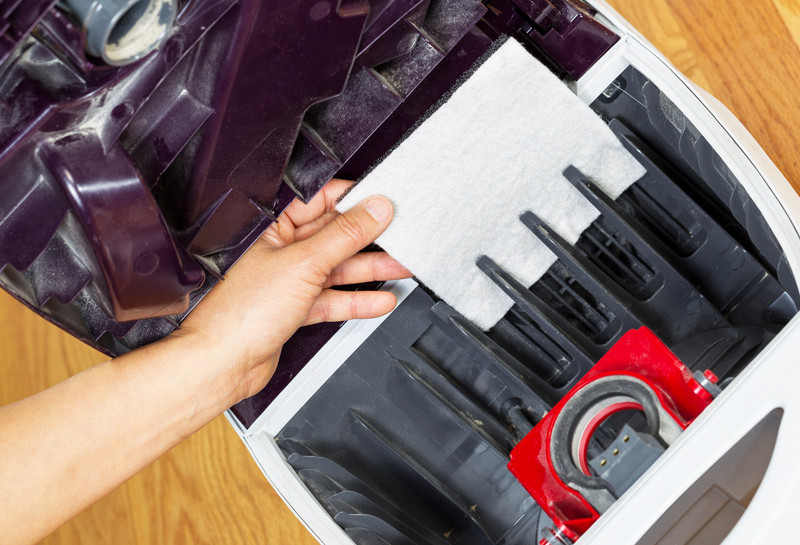Create a mold-free bathroom with these strategic tips
Posted on 27/08/2025

Create a Mold-Free Bathroom With These Strategic Tips
Keeping your bathroom fresh and healthy goes far beyond simple cleaning. If you want to truly prevent mold in your bathroom, you need to be proactive, using strategic methods that effectively tackle the roots of the problem. This comprehensive guide brings together the most reliable, actionable advice so you can enjoy a mold-free, clean, and comfortable bathroom all year round.
- Why Mold Grows in Bathrooms
- Essential Strategies to Prevent Mold in Your Bathroom
- Optimizing Bathroom Ventilation: The Key Step
- Eliminate Excess Moisture: Critical Techniques
- Regular Cleaning and Mold Prevention Maintenance
- Materials & Products to Help Maintain a Mold-Free Space
- Repair and Upgrade: Improve Your Bathroom for Maximum Mold Resistance
- Natural and DIY Options for Mold Control
- React Quickly to Signs of Mold
- Frequently Asked Questions on Bathroom Mold
- Conclusion: Enjoy a Fresh, Mold-Free Bathroom
Why Does Mold Grow So Easily in Bathrooms?
Mold thrives in environments where moisture, warmth, and organic matter coexist. Bathrooms are notorious for frequent humidity due to daily showers, baths, and even hand-washing. Add poor ventilation and dark corners, and you have an ideal breeding ground for mold spores.
- Constant Moisture: Showers, baths, and sinks increase humidity and dampness, giving mold what it needs to flourish.
- Poor Air Circulation: Without proper ventilation, airborne moisture lingers and settles, making surfaces stay wet.
- Organic Residue: Soap scum, dust, hair, and skin cells provide food for mold colonies.
- Warm Temperatures: Bathrooms are typically warm, especially after a hot shower, accelerating mold growth.
Understanding why mold develops is the first step toward effective mold prevention in your bathroom.
Essential Strategies to Prevent Mold in Your Bathroom
Creating a mold-free bathroom requires a multifaceted approach that addresses all contributing factors. Employ these expert-endorsed methods for a cleaner, healthier space:
- Promote air flow and ventilation
- Control and eliminate moisture
- Maintain rigorous cleaning routines
- Use mold-resistant materials
- Fix leaks and repair water-damaged surfaces promptly
- Respond swiftly at the first signs of mold
- Utilize natural anti-mold remedies when appropriate
Let's explore each mold-prevention technique in detail to ensure your bathroom stays fresh, dry, and mold-free.
Optimizing Bathroom Ventilation: The Key Step to a Mold-Free Bathroom
Ventilation is arguably the most important factor to prevent mold growth in your bathroom. Moist air needs a way to escape; if left to linger, it seeps into tiles, grout, and even drywall, allowing mold spores to germinate and spread.
Essential Ventilation Tips:
- Install or Upgrade Exhaust Fans: Choose a high-quality bathroom exhaust fan that matches your room's size. Make sure it's vented outdoors, not just into the attic.
- Run the Fan Consistently: Use the fan during and for at least 20-30 minutes after bathing or showering.
- Open Windows or Doors: When weather allows, open windows or leave the door slightly ajar to allow fresh air in and moist air out.
- Clean and Maintain Fans: Dusty, clogged fans can't efficiently remove moisture. Wipe down fan grilles and check for blockages regularly.
- Consider a Dehumidifier: In windowless bathrooms, a compact dehumidifier absorbs excess moisture even when the fan isn't running.
Improving ventilation is a powerful, foundational step in your ongoing fight against bathroom mold.
Eliminate Excess Moisture: Critical Techniques
Dryness discourages mold. The more dry surfaces and air are, the less likely mold will appear. Take consistent steps to minimize lingering dampness:
- Squeegee Shower Walls: After every shower, use a squeegee to remove water from tiles and glass doors, which inhibits mold growth on grout and caulk lines.
- Dry Bath Mats and Towels Promptly: Spread towels out after use. Hang bath mats over the tub or towel bar. Wash regularly.
- Fix Leaks Immediately: Dripping faucets, leaking toilet tanks, or loose shower heads can silently create mold-friendly moisture.
- Seal Grout and Tiles: Reseal grout lines at least annually to make surfaces more resistant to moisture penetration.
- Wipe Down Surfaces: Use a microfiber cloth to quickly dry sink counters, tubs, and even toilet tanks after use.
- Keep Bottles and Accessories Dry: Water collects under soap dishes, bottles, and caddies. Empty and dry these regularly.
Staying vigilant about moisture makes your bathroom far less hospitable to all types of mold.
Regular Cleaning and Mold Prevention Maintenance
Routine, thorough cleaning is one of the most effective defenses against a moldy bathroom. Not only does cleaning remove grime, but it also disrupts mold spores before they can take hold.
Cleaning Best Practices for a Mold-Free Bathroom:
- Scrub Showers Weekly: Use a non-abrasive brush or sponge on tiles, grout, and corners. Focus on areas that get little sunlight and air flow.
- Use Mold-Targeted Cleaners: Choose products labeled for mold and mildew removal. Alternatively, use vinegar or hydrogen peroxide as a natural, effective option.
- Clean Shower Curtains and Liners: Wash these monthly, or opt for machine-washable, mold-resistant options.
- Disinfect Sinks and Drains: Clean counters, faucets, and handles frequently. Scrub drains with a baking soda/vinegar mixture to prevent slimy, moldy build-up.
- Check Hidden Corners: Don't forget baseboards, under the sink, and behind the toilet--these often-overlooked spaces can harbor mold.
- Declutter Surfaces: Fewer items on shelves and counters mean fewer places for mold to hide or moisture to gather.
Tip: Choose non-toxic cleaning alternatives for sensitive skin or eco-friendly practice, like a vinegar-water solution or diluted tea tree oil for daily spritzing.
Materials & Products for a Mold-Resistant Bathroom
The right construction and finishing materials can significantly reduce the chance of mold taking hold. Consider the following upgrades and products:
- Mold-Resistant Paints: Use specially-formulated bathroom paints containing mold inhibitors.
- Waterproof Wall Panels: Acrylic, fiberglass, or PVC panels are less porous and easy to wipe clean.
- Epoxy Grout: More dense and less absorbent than cement, epoxy grout repels water and resists stains.
- Mildew-Resistant Caulk: Use silicone caulking with fungicides for sealing tubs, sinks, windows, and baseboards.
- Mold-Blocking Primers: Protect walls and ceilings with a primer that prevents mold spores from embedding in porous surfaces.
- Mildew-Resistant Shower Curtains & Liners: Invest in products labeled "mold-" or "mildew-resistant" and clean them regularly.
Pro Tip:
When renovating, always choose water-repellent building materials wherever possible for maximum mold resistance throughout your bathroom.
Repair and Upgrade: Fortify Your Bathroom Against Mold
Staying ahead of wear and tear is essential to maintain a mold-free bathroom. As soon as you notice cracks, gaps, or water stains, take action:
- Seal All Cracks and Gaps: Water seeps into tiny spaces in grout, tiles, or walls, which mold exploits. Patch and re-seal as needed.
- Upgrade Fixtures: Modern low-flow, drip-free faucets or shower heads reduce leaks and pooling water.
- Replace Damaged Caulk and Grout: Old, peeling, or discolored caulk should be promptly removed, cleaned, and replaced.
- Check Plumbing Regularly: Inspect under sinks, around toilet bases, and behind washing machines for leaks or standing water.
- Improve Lighting: Sunlight naturally inhibits mold. Where possible, add skylights or extra LED overhead lights to brighten shadowy corners.
Timely repairs and smart upgrades serve as a critical barrier against mold infestations.
Natural and DIY Options for Bathroom Mold Control
If you prefer green or home-made methods, there are several proven ways to discourage bathroom mold naturally:
- Vinegar Spray: Fill a spray bottle with white vinegar and mist on tiles and shower curtains daily. The acidic environment repels mold growth.
- Baking Soda Scrub: Mix baking soda with water to form a paste. Use it to scrub away soap scum and break down mildew on tiles and grout.
- Tea Tree Oil: Combine several drops of tea tree oil with water in a spray bottle; spritz daily as an anti-fungal surface spray.
- Lemon Juice: The natural acidity of lemon juice destroys many mold species; use as a spot cleaner on tiles and grout.
- Hydrogen Peroxide: Apply 3% hydrogen peroxide directly to mold spots. Let sit for 10 minutes before scrubbing.
While these methods are highly effective for light prevention and surface cleaning, large infestations may require commercial products or professional intervention.
React Quickly to the First Signs of Mold
Early detection makes all the difference in controlling bathroom mold. Even small black or pink spots on grout, caulk, or ceilings could spread rapidly if ignored. Here's what to do at the first sign:
- Spot Clean: Use a dedicated bathroom mold remover, or a vinegar or peroxide solution, to immediately disinfect the area.
- Assess for Leaks: Inspect nearby plumbing and fixtures for drips or unnoticed leaks.
- Increase Ventilation: Run exhaust fans longer, keep the bathroom door open, or set up a portable fan to fully dry problem areas.
- Check for Hidden Mold: If you notice musty odors but can't see the source, remove access panels or consult a professional.
Nipping mold in the bud not only protects your bathroom's appearance, but also the indoor air quality in your entire home.
FAQs About Maintaining a Mold-Free Bathroom
How can I stop mold from coming back in my bathroom?
Consistent ventilation, moisture control, and proper cleaning routines are vital. Fix leaks as soon as they're noticed, keep surfaces dry, and use mold-resistant paints and caulks.
What is the best cleaner to use for bathroom mold?
Commercial mold removers, a mixture of vinegar and water, or hydrogen peroxide are all effective. Baking soda is a gentle scrubbing agent for grout and tiles.
Is bathroom mold dangerous?
Certain types of mold (like black mold) can trigger allergies, respiratory issues, or worsen asthma. Even less-toxic molds release spores that are bad for indoor air quality, so always remove mold as soon as you spot it.
How often should I clean to keep my bathroom mold-free?
Weekly cleaning is usually sufficient for most bathrooms, but in high-humidity climates or homes with many occupants, consider a wipe-down after each shower and more frequent floor or wall cleaning.
Should I replace moldy drywall?
If mold has penetrated drywall or insulation, material replacement is often the safest (and only) way to fully remove the contamination and prevent future outbreaks.
Conclusion: Enjoy a Fresh, Mold-Free Bathroom Every Day
Maintaining a mold-free bathroom is both achievable and rewarding. By understanding the causes of mold, optimizing ventilation, managing moisture, employing the right cleaning techniques, and making thoughtful material choices, you'll dramatically reduce the risk of mold growth in your bathroom.
Make these strategic bathroom tips part of your routine:
- Keep the air moving with a powerful vent system or exhaust fan.
- Wipe down wet surfaces and dry out towels, mats, and shower curtains.
- Stay aware and act fast at the first sign of moisture or mold growth.
- Clean regularly using anti-mold formulas or natural DIY sprays.
- Choose mold-resistant paints, caulks, and fixtures when upgrading.
With these proactive steps, you can transform your bathroom into a healthier, more comfortable, and truly mold-free oasis for your family. Remember, a clean and dry bathroom is your best defense--start implementing these strategies today for long-lasting freshness!




